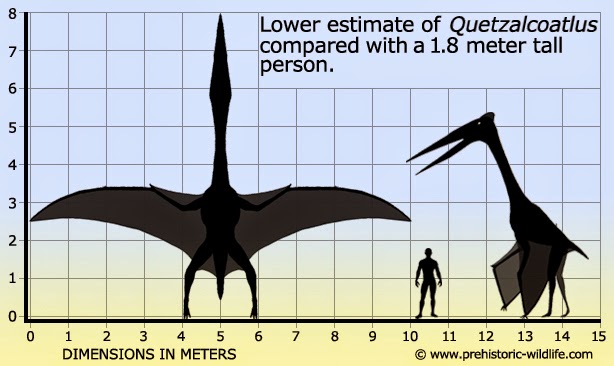


They were way bigger than the pterosaur, Nemicolopterus, which had a wingspan of only 10 in (25 cm). The Quetzalcoatlus wingspan was about 38-39 ft (11-12 m). One of Brown’s personal goals is to obtain a permit and go out into the national park to find the rest of the animal and collect it. Quetzalcoatlus species are considered one of the largest flying reptiles that the world has known. Brown said he wants to pick up where Douglas Lawson, a former geology graduate student at the University of Texas who discovered the original bones in 1971, left off. Scientists have fairly complete skeletons of the smaller species, but only a portion of the original Quetzalcoatlus body. Researchers found about 30 of the flying animals together at a fossil excavation. It was the largest pterosaur of all Earth 's history and thus the largest flying vertebrate of all time, as far as we know. The smaller Quetzalcoatlus was much more social and would spend time in large groups. Quetzalcoatlus (meaning feathered serpent god lizard) was a magnificent giant flying reptile, possessing an 13-15 meter (43-50 foot) wingspan and weighing 250 kg. This reptile species also tended to hunt alone. The larger Quetzalcoatlus would have likely used its narrow beak to forage for crabs and worms along the water, according to the research collection. The animals lived in a forest oasis over 70 million years ago in what is now Texas, which was home to many bodies of water. The smaller of the two new species has a blunt beak while the larger species has a long, thin, beak that comes to a point. Adam Marsh/National Park Serviceģ00 million-year-old fossil skeleton in Utah could be the first of its kind Scientists collect a 300 million-year-old fossil skeleton at Canyonlands National Park.


 0 kommentar(er)
0 kommentar(er)
